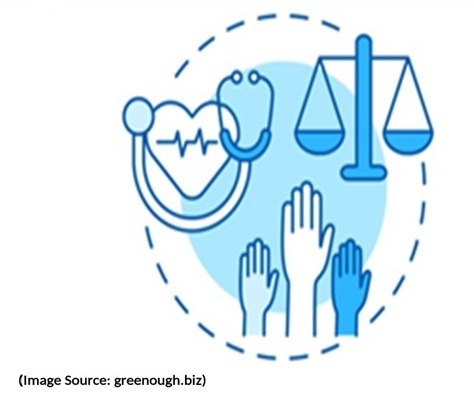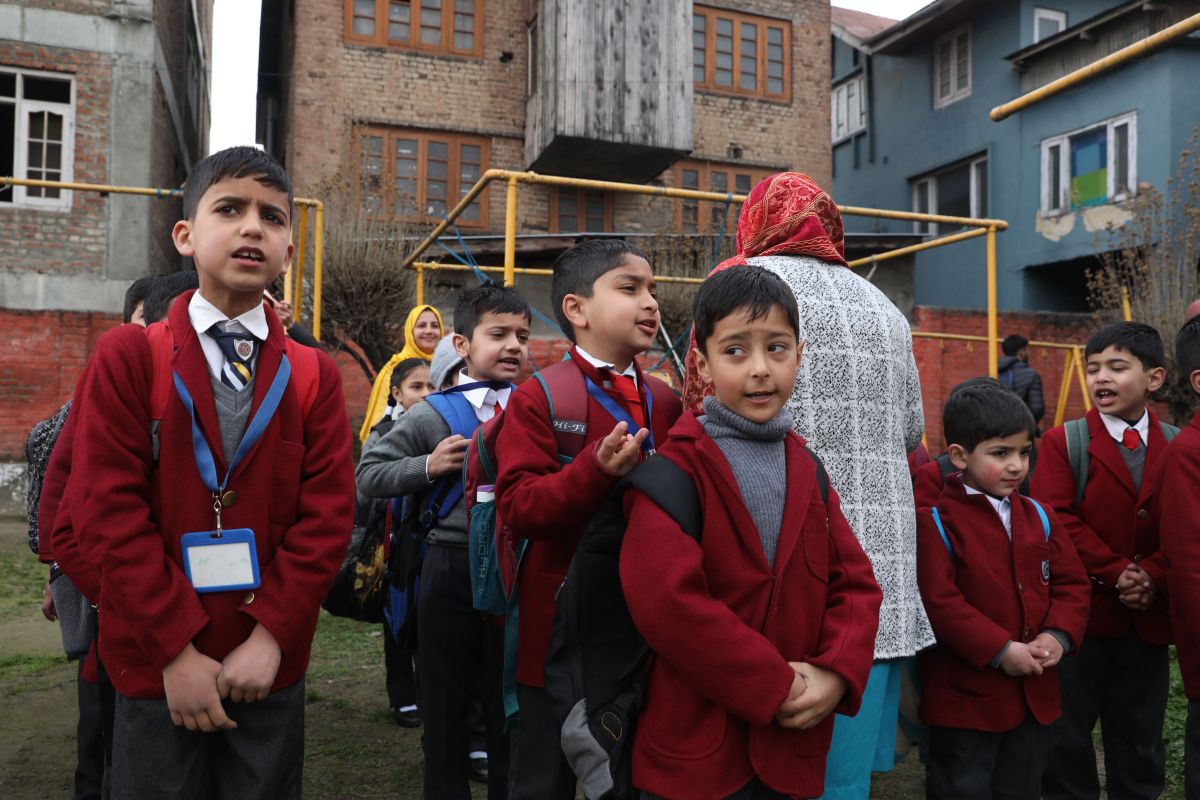
India is committed to providing easy accessibility to preventative, promotive, curative, rehabilitative and palliative healthcare services to all its citizens, particularly the poor and disadvantaged people, thus ensuring universal health coverage to all. Attainment of Universal Health Coverage (UHC) and elimination of health disparities will be the route to realization of health equity in India. The Universal Health Coverage is endorsed under target 3.8 in the SDGs also and the goal 10 in the SDG is to “Reduce inequality within and among countries”. Equity is part of a few other SDGs as well.
Equity reduces the inequity that involves affirmative action to reach the poorest and minimize disparities related to gender, poverty, caste, disability, social exclusion, and geographical barriers. ‘Equity in Health’ also includes addressing barriers to health like poverty which lead to multifaceted deprivation and disempowerment including poor housing and living conditions, inaccessibility to good and gainful employment opportunities and a safe environment. This necessitates greater investments and financial protection for the poor, who bear the largest disease burden. It can be said that equity in health ensures that everyone, regardless of their background or socio-economic status, caste and creed, religion, physical and mental abilities, has a fair chance to achieve good health.
Primary Healthcare (PHC) as per Alma Ata Declaration in September 1978 marked the international recognition and acknowledgement of the understanding of Universal Health Coverage (UHC). It is understood that health outcomes are deeply influenced by social factors, thereby guiding subsequent health policies of a country. It proposed the concept appropriate technology in PHC as “Technology that is scientifically sound, adaptable to local needs and acceptable to those who apply it and those for whom it is used and that can be maintained by the people themselves in keeping with the principle of self-reliance with the resources the community and country can afford”. India’s initial National Health Policy (1983) was crafted in response to the International Declaration, urging a shift in focus of health programs towards its goals. It specifically highlighted children and mothers as high-risk groups and emphasized the identification of other vulnerable populations, with mental health emerging as a significant concern within this framework. India has made great strides in the medical field, and our advanced healthcare and highly skilled doctors are at par with the best in the world.
India’s commitment to achieving UHC as per UN 15 years’ SDGs is reflected in its policies and institutional mechanisms, which are directed towards increasing coverage and access of health services. India is working on a health model that is holistic and inclusive-a model that stresses preventive health care-and easy, affordable, and accessible treatment in cases of diseases.
A flagship initiative to close the ever-widening gap between the rich and the poor across various regions, the NRHM was launched in 2005.The goal was to provide “effective healthcare to rural population throughout the country with special focus on 18 states, which have weak public health indicators and/or weak infrastructure”. This was also aimed to replace traditional health programs with a system incorporating health insurance, aiming to provide essential and affordable healthcare based on individual needs to all citizens.
The National Health Policy 2017 aims to achieve the highest possible level of health and well-being for all ages. It emphasizes preventive and promotive health care across all developmental policies and ensures universal access to high-quality healthcare services without causing financial hardship. It stressed Comprehensive Primary Health Care (CHPC). India has made notable progress in healthcare equity in recent years. Initiatives like Ayushman Bharat have significantly increased access to healthcare services, providing insurance coverage to over 550 million people. This is the largest health assurance scheme in the world, which aims at providing a health cover of Rs. 5 lakh per family per year for secondary and tertiary care hospitalization to over 12 crore poor and vulnerable families that form the bottom 40% of the Indian population. This program aims to alleviate the financial burden on low-income families and improve access to quality healthcare. Union Cabinet approved a major expansion of the AB PM-JAY on September 11, 2024.This expansion is set to benefit around 4.5 crore families, including 6 crore vulnerable senior citizens aged 70 and above who will receive health coverage, regardless of their income.
Additionally, the National Health Mission has strengthened healthcare infrastructure in rural areas, ensuring essential services reach underserved communities. To address issues of both communicable and non-communicable diseases cancer, respiratory diseases, and other chronic diseases to achieve progress towards UHC, India launched the Ayushman Bharat, one of the most ambitious health mission. Ayushman Bharat is bringing revolutionary change to the country. It encompasses two complementary schemes: Ayushman Arogya Mandir (AAMs) and Pradhan Mantri Jan Arogya Yojana (PM-JAY). AAMs are envisioned as the foundation of the health system to provide CHPC.
When examining health outcomes such as life expectancy, infant mortality rate (IMR), U-5 child mortality, fertility rates, and annual population growth rate, it is evident that males generally experience better outcomes compared to females. While there has been significant reduction in disparities between different social groups but some inequalities, still exist. Efforts to improve maternal and child health have shown positive results, with higher rates of institutional deliveries and improved immunization coverage. The government has also been addressing regional disparities by investing in healthcare facilities and training healthcare professionals in remote areas. Furthermore, integrating traditional medicine systems like Ayurveda with modern healthcare practices has expanded the range of accessible treatments. Overall, despite ongoing challenges, India’s commitment to healthcare equity is evident through its policies and programs aimed at creating a more inclusive and equitable healthcare system.
The life expectancy in India has increased from 34 years (1947) to 70.6 years (2024). The IMR has decreased from 138 deaths (1971) to 25.8 deaths (2023) per 1000 live births. Annual population growth rate of India has decreased from 2.21% (1951) to 0.92 % (2024). Due to Government’s effort to enhance the programmes for maternal and child health since last few decades, the poor and downtrodden people are able to access the essential health services like institutional births, immunization, and post-natal care. During the past decade, disparities in health spending among various groups have been significantly reduced.
Addressing the root causes of health inequalities and disparities involves several critical steps:
- Understanding Social and Environmental Determinants
- Supporting Vulnerable Groups
- Promoting Health Equity
- Redistributing Socioeconomic Resources
- Sustaining Equity Efforts
By addressing these dimensions comprehensively, societies can work towards achieving health equity where everyone has the opportunity to live a healthy life, regardless of their background or circumstances.
Dr. Sudarsan Mandal, Sr. CMO, NCVBDC & Ex-DDG (NCD), Dte.GHS, MoH&FW







